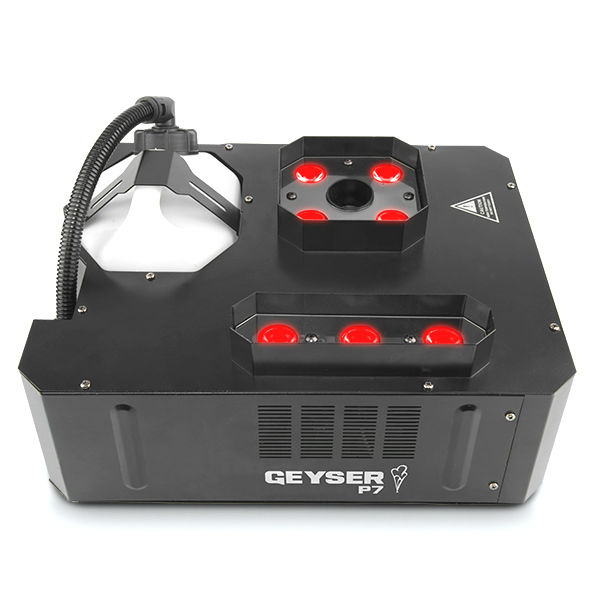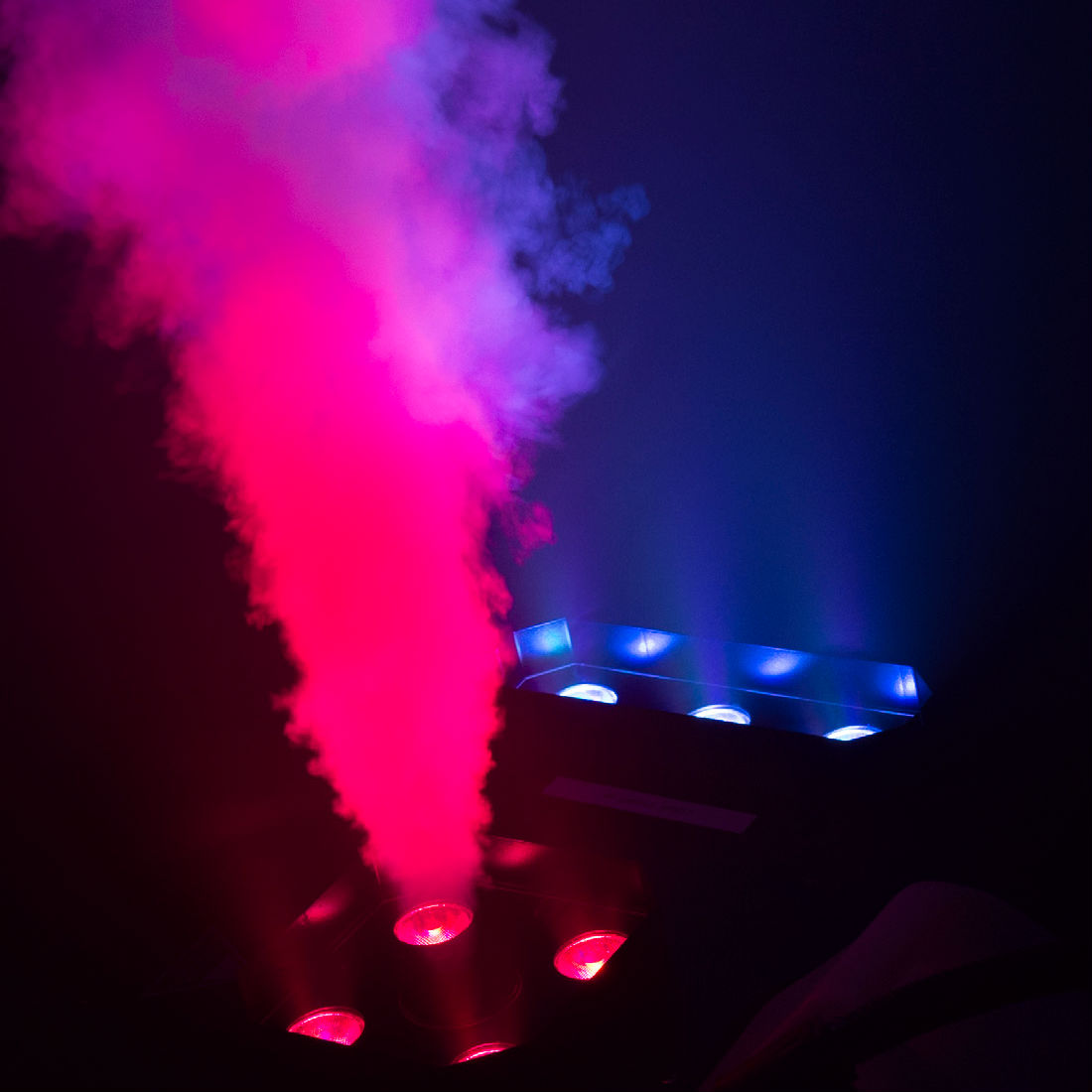Working with Black Light Effects
The Halloween season is in full swing here at Theatre Effects and customers have been calling for all sorts of products for their Halloween displays and haunted attractions. In addition to fog and pyrotechnics, this time of year usually sees a lot of demand for black light and UV products. If you're considering a black light effect this year, I have some information and tips to help you do it up right.
Let's start by looking at how black lights actually work. The bulb in a black light fixture is designed to emit very little visible light; most of its output is harmless UV-A radiation. By itself, a black light doesn't do much other than produce a dim, purplish glow. The real effect of a black light is seen when something that is UV-reactive is exposed to it. An item is UV-reactive if it contains phosphors that react to UV-A radiation. Okay, so what's a phosphor? A phosphor is a chemical substance that emits visible light when it's excited by UV energy. Phosphors are used in fluorescent lamps, televisions, even laundry detergent! They're also responsible for the groovy, glowing effects you see with fluorescent paint.
When you're setting up a black light effect it's important to remember how UV-reactive products work in order to get the best effect out of them. Because fluorescent paints and dyes don't emit a lot of light compared to a ceiling lamp, their glow can be diminished or lost altogether if there is too much visible light in the room. Think of a flashlight; in a dark room, it produces a brilliant white circle of light but in a sunlit room you'd barely notice it.
Also, realize that the light from a fluorescent black light tube becomes weaker as it travels out from the fixture. This means that the farther you place your fluorescent object from the tube, the less UV it will receive and, consequently, the weaker the effect will be. I recommend placing the tubes within a few feet of the object you're lighting. If you are trying to cover an entire room with black light, you'll want to space the tubes no more than 3 - 4 feet apart to ensure even coverage.
Finally, do like a vampire and beware of sunlight! Sunlight contains LOTS of UV radiation that will cause your fluorescent paints to fade more quickly. If you can, keep all UV effects indoors, away from the sun. If that isn't possible -- if, for example, you're using fluorescent paint on an outdoor sign -- you may want to consider picking up our UV inhibitor/sealer. This product not only protects your paint from sunlight, but will also help protect it against weather, or from curious guests running their hands over it.
There are lots of products other than UV-paint that will react to a black light. We sell invisible inks and make up that can only be seen under a UV light. Our Detecto Powder and a hand-held battery black light can make a fun "detective kit" present for someone. Also, many household products are UV-reactive. Quinine, the ingredient in Tonic Water that gives it its distinctive taste, will produce a creepy green glow that's perfect for an experiment in a mad scientist's lab. Do your own "experiments" at home to see what sorts of effects you can get. If you find any that you think are particularly cool, share them with us!
*********************************************
Theatre Effects Customer Service Department
service@theatrefx.com
www.theatrefx.com
Theatre Effects, 1810 Airport Exchange Blvd. #400, Erlanger, KY 41018
Phone: 1-800-791-7646 or 513-772-7646 Fax: 513-772-3579









